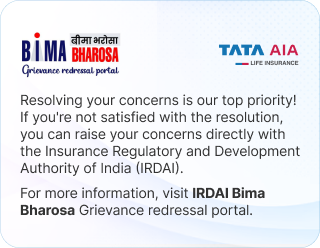Sum insured applies to general insurance and covers actual losses, whereas sum assured is used in life insurance and provides a fixed benefit to the nominee. While both represent the maximum amount an insurer will pay in case of a claim, they apply to different types of insurance policies. Understanding the difference between sum insured vs sum assured in insurance is crucial, as it remains one of the commonly misunderstood concepts among insurance buyers. Knowing this difference ensures that you select the appropriate coverage for your needs, whether it’s protecting assets or securing your family’s financial future.
What is a Sum Insured?
Sum insured is the maximum amount an insurance company agrees to pay in case of a claim under general insurance policies. It applies to:
Health Insurance (hospitalization and medical bills)
Motor Insurance (vehicle damage or loss)
Home Insurance (property or content damage)
Travel Insurance (medical or travel-related losses)
The sum insured is fixed at the time of policy purchase and reflects the estimated value of the insured asset. It follows the principle of indemnity, meaning the insurer will compensate only for the actual financial loss, not exceeding the coverage amount.
For example:
If you have a health insurance policy with a sum insured of ₹10 lakhs and your hospital bill is ₹8 lakhs, the insurer will cover the full amount. But if your bill is ₹12 lakhs, the insurer will pay ₹10 lakhs, and you will bear the remaining ₹2 lakhs.
Characteristics of Sum Insured
Here are the key characteristics that define how sum insured works:
It represents the maximum amount the insurer will reimburse for repair, replacement, or medical costs, depending on the policy.
It acts as a limit on the maximum amount the insurer will pay towards a claim.
The insurer pays only for the actual loss, based on the terms of the policy, and not beyond the sum insured chosen at the time of buying the insurance.
What is a Sum Assured?
Sum assured is the guaranteed1 amount that an insurance company agrees to pay you or your nominee, either in case of a claimable event (such as the policyholder’s death) or at the end of the policy term. This concept is primarily used in:
It is a fixed value chosen at the time of purchasing the policy and remains unchanged throughout the policy tenure. The premiums you pay are based on this sum assured. Once the sum assured is paid out, either on maturity or death, the policy terminates.
For example:
If you purchase a life insurance policy with a sum assured of ₹15 lakhs and pass away during the policy term, your nominee will receive ₹15 lakhs as the death benefit.
Moreover, these plans often offer flexible premium payment options, tax benefits under Sections 80C and 10(10D), and the ability to enhance coverage through riders.
Characteristics of Sum Assured
Here are the key characteristics that define how sum assured works:
It provides a fixed payout to the policyholder or nominee.
Applicable to life insurance and endowment plans.
The sum assured remains unchanged throughout the policy term, unless modified as per the policy terms.
It is the guaranteed1 amount paid either on the policyholder’s death or on maturity, ensuring financial security for the family.
Difference Between the Sum Insured and Sum Assured
The table below highlights the difference between basic sum insured and sum assured:
Basis |
Sum Insured |
Sum Assured |
Applicability of policy |
Applicable for non-life insurance plans such as home insurance, motor insurance, health insurance, etc. |
Applicable for life insurance and guaranteed1 return insurance policies |
Nature of policy |
Based on the indemnity principle, it reimburses only the amount of loss or damage |
Fixed amount, pre-determined by the insurer; paid in case of death during the tenure or policy maturity |
Benefit |
No monetary benefit is available, only reimbursement of the loss/damage amount |
The monetary benefit is paid to the insured or nominee |
Tax Implications |
Premiums for health insurance (under Section 80D) are tax-deductible. |
Tax benefits2 on premiums under section 80C; tax-free proceeds (death/maturity) under Section 10(10D) (t&c apply) |
Why is the Difference Between Sum Insured and Sum Assured Important?
Understanding the difference between sum insured vs sum assured is essential for making informed insurance decisions. Here's why it matters:
It may help choose the right policy based on your financial goals, asset protection or life coverage
Avoiding confusion at the time of claim helps determine the payout amount
Affects premium calculations, as each one is priced differently
Guides financial planning, ensuring adequate coverage for you and your family
Clarifies tax benefits, as different tax provisions apply to each type of insurance
How to Calculate the Sum Insured?

When choosing the basic sum insured for your policy, you should consider the following factors:
- If you are insuring an asset, you should consider the asset's value so that your damage or loss is fully compensated.
- In case you are insuring your health, you should opt for a sum that is sufficient to cover medical expenses in an emergency.
- If you are buying a family floater plan, you should take a sum insured that is sufficient to cover all dependents.
- If you are insuring your life, you should consider your current income, expenses, outstanding financial liabilities, and upcoming major financial requirements.
- Consider the impact of inflation in the long run when deciding your sum insured value.
- Choose an affordable sum insured that fits your budget.
Example: If your family’s annual medical expenses could go up to ₹4-5 lakhs, a health insurance policy with a sum insured of ₹10 lakhs may offer suitable financial protection, especially against rising medical costs.
How to calculate the sum assured?
Choosing the right sum assured is extremely crucial for your life insurance policies. Consider the following factors to know the optimal sum assured amount:
Your sum assured should be sufficient to cover all your financial responsibilities, such as funding your child’s education or marriage, sustaining your family's living expenses, and more.
Your sum assured should be enough to financially secure all your dependents, such as your spouse, kids, parents, etc.
The sum assured in insurance should be adequate for your family to pay off the financial liabilities in your absence.
Your age is a key factor in determining your sum assured. If you are young, opt for a high cover due to longer financial obligations.
The sum assured in insurance should be affordable and aligned with your financial capacity.
Example: If your current income is ₹10 lakhs per year, and you want your family to be financially secure for the next 15 years, a sum assured of ₹1.5 crore (₹10,00,000 × 15) may be suitable to cover expenses, liabilities, and future goals.
Conclusion
It is important to understand the differences between these two insurance terminologies so that you may choose the right insurance amount as per your policy and needs. While sum insured applies to general insurance and covers actual losses, sum assured is used in life insurance and guarantees a fixed payout. Choose the optimal sum insured and sum assured as per your insurance policy for a secure future. Tata AIA Life online offers a guaranteed1 return insurance plan that offers life cover, assured returns, tax benefits, unique riders, loan against policy and much more! To know more, get in touch with our insurance experts.









 FOR EXISTING POLICY
FOR EXISTING POLICY 
 FOR NEW POLICY
FOR NEW POLICY 






